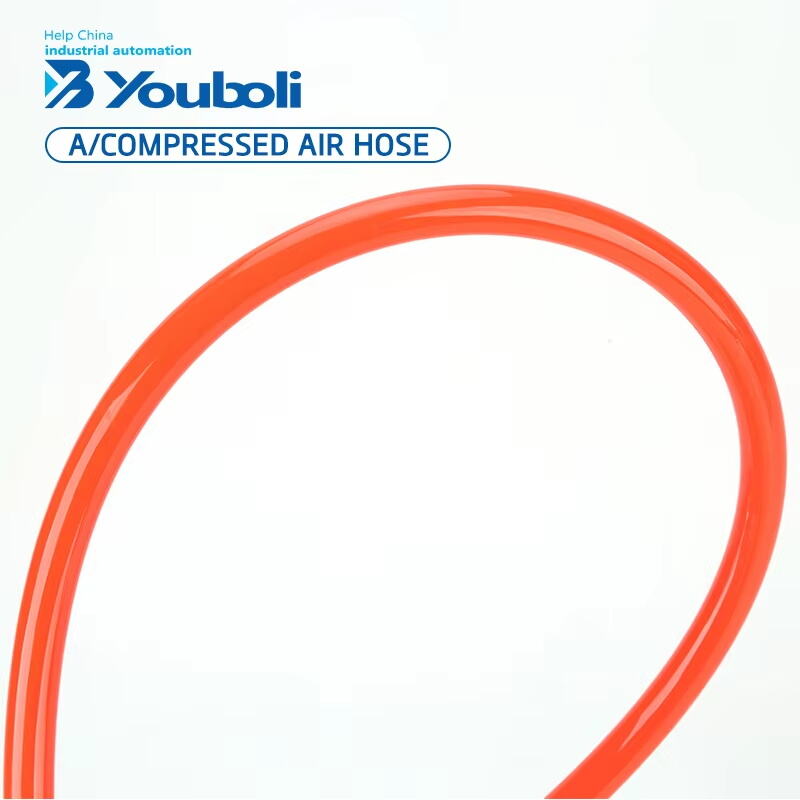Introduction
Is your compressed air system silently bleeding money? That faint hissing sound in your workshop isn't just background noise—it's the sound of wasted energy, decreased efficiency, and money flying out the door. Often, the culprit lies in the most overlooked part of the system: the fittings. Choosing the wrong fitting for your compressed air application can lead to leaks, pressure drops, safety hazards, and skyrocketing operational costs. This in-depth guide is designed to end the confusion. We will demystify the world of compressed air fittings, providing you with the expert knowledge needed to select the perfect connection for your specific needs. By the end of this article, you'll be able to make an informed decision that enhances your system's reliability, improves safety, and significantly reduces energy consumption.
Why the Right Compressed Air Fitting is a Critical Business Decision
Selecting a fitting is not just a mechanical choice; it's an economic and operational one. The right fitting directly impacts your bottom line and system integrity.
Energy Efficiency and Cost Savings: Compressed air is one of the most expensive utilities in a plant. The U.S. Department of Energy states that a single 1/8-inch leak at 100 PSI can cost over $2,500 a year in wasted electricity. Secure, leak-free fittings are your primary defense against this financial drain.
System Performance and Productivity: Every fitting causes a slight pressure drop. Inefficient fittings create excessive drops, reducing the power available to your tools and pneumatic equipment. This leads to slower cycle times, weaker clamping force, and diminished overall output, directly hampering productivity.
Safety and Reliability: Compressed air systems operate under high pressure. A failed fitting can lead to dangerous hose whip—where a ruptured line thrashes uncontrollably—causing equipment damage or serious injury. The right fitting ensures a secure, fail-safe connection.
Maintenance and Downtime: Fittings that are difficult to install or prone to leaks increase maintenance time and frequency. Easy-to-install and reliable fittings minimize unplanned downtime, keeping your production line running smoothly.
What Are Compressed Air Fittings? The Foundation of Your System
A compressed air fitting is a connector used to join sections of pipe, tube, or hose within a pneumatic system. Their core functions are to:
Create a secure, leak-free seal to contain the high-pressure air.
Allow for changes in direction (elbows), splitting of flow (tees), or changes in size (reducers).
Enable quick and easy connection and disconnection of tools and components.
Key characteristics define every fitting:
-
Thread Type: The most common pitfall for beginners. Using the wrong thread guarantees a leak.
NPT (National Pipe Taper): North American standard. The tapered threads form a seal by wedging together, often requiring thread sealant (e.g., Teflon tape).
BSPP (British Standard Pipe Parallel): European and Asian standard. The threads are parallel and require a sealing washer (e.g., Dowty washer) to form a seal on the face, not the threads.
BSPT (British Standard Pipe Taper): A less common tapered thread variant of BSP.
Size: Defined by the port thread size (e.g., 1/4", 3/8") and the tubing outer diameter (OD) it accepts (e.g., 6mm, 8mm, 1/4"). Mixing metric and imperial sizes is a common error.
-
Material:
Brass: The most common material. Offers excellent corrosion resistance, good machinability, and is suitable for most general industrial environments.
Stainless Steel: Used in harsh environments—food and beverage, chemical, pharmaceutical, or marine applications—where corrosion resistance is paramount.
Plastic (Nylon or PVDF): Used for lightweight, cost-sensitive, or corrosion-prone applications, typically at lower pressures.
A Detailed Breakdown of Compressed Air Fitting Types
1. Push-to-Connect Fittings (The Modern Standard)
What Are They?
Push-in fittings are the epitome of efficiency. They allow for instant tube connection by simply pushing a prepared tube into the port until it bottoms out. An internal collet grips the tube, and an O-ring provides a perfect seal. Disconnection is just as easy: press the release collar and pull the tube out.
Ideal Applications:
Factory automation systems
Machine tools
Packaging machinery
Any application requiring frequent reconfiguration or maintenance.
Advantages and Disadvantages
-
Advantages:
Blazing-Fast Installation & Tool-Free: Reduces assembly time by up to 50% compared to threaded alternatives. No wrenches needed.
Excellent Leak Prevention: When installed on a properly prepared tube, they provide a superior seal, minimizing energy waste.
Reusable: Can be used repeatedly on the same tube or a new one after trimming the old end.
Vibration Resistant: The internal grip mechanism is highly resistant to loosening under vibration, a common failure point for threaded fittings.
-
Disadvantages:
Higher Unit Cost: More expensive upfront than basic barbed or compression fittings.
Critical Tubing Preparation: The tube end must be cut perfectly square and deburred. A poor cut will damage the O-ring and cause leaks.
Temperature Limits: Standard Buna-N O-rings have a lower temperature limit than metal fittings. (Viton O-ring versions are available for higher heat).
2. Compression Fittings (The Robust Workhorse)
What Are They?
Compression fittings use a mechanical force to create a seal. The fitting consists of a body, a compression nut, and a ferrule(s). As the nut is tightened, it compresses the ferrule onto the tubing, forming a strong, metal-to-metal grip and seal.
Ideal Applications:
Higher-pressure systems (closer to the compressor)
Applications using metal (copper, stainless steel) tubing
Permanent or semi-permanent installations where disassembly is rare.
Advantages and Disadvantages
-
Advantages:
High-Pressure Capability: Can handle higher pressures than most push-in fittings.
Excellent Pull-Out Resistance: The crushed ferrule provides a mechanical grip that is extremely resistant to the tube being pulled out.
No Threads on Tubing: The seal is made on the tube itself.
-
Disadvantages:
Time-Consuming Installation: Requires two wrenches and careful tightening to avoid under or over-torquing.
Generally Not Reusable: The ferrule is typically deformed during installation and must be replaced if disconnected.
Bulkier Design: The nut and ferrule assembly can make them larger than equivalent push-in fittings.
3. Barbed Fittings (The Cost-Effective Solution)
What Are They?
Barbed fittings have a ridged, tapered end. Soft tubing is pushed over the barb, and a clamp (e.g., hose clamp) is almost always required to secure it and prevent the tube from blowing off under pressure.
Ideal Applications:
Low-pressure systems (e.g., HVAC, aquarium air pumps)
Low-cost, non-critical applications
Temporary setups
Advantages and Disadvantages
-
Advantages:
Extremely Low Cost: The most inexpensive option available.
Simple to Understand: No complex parts or mechanisms.
-
Disadvantages:
High Leak Potential: Relies on a clamp for security, which can loosen over time.
Poor Vibration Resistance: Prone to coming loose in vibrating environments.
Not for High Pressure: Unsuitable for standard industrial compressed air pressures.
Difficult to Disassemble: After being clamped for a long time, the tubing can fuse to the barb.
4. Quick-Disconnect (QD) Couplings (The Point-of-Use Specialist)
What Are They?
These are two-part couplings (a plug and a socket) designed for tools and equipment that need to be connected and disconnected frequently. The plug is inserted into the socket, and a locking mechanism (e.g., ball bearings) engages automatically.
Ideal Applications:
Connecting air tools (drills, sanders, impact wrenches)
Air blow guns
Portable equipment
Advantages and Disadvantages
-
Advantages:
Ultra-Fast Connection: Perfect for frequently changed equipment.
Automatic Shut-Off: Premium models shut off airflow when disconnected, saving energy.
-
Disadvantages:
Inherent Pressure Drop: The internal design always restricts flow, creating a larger pressure drop than straight-through fittings.
Not for Main Lines: Should only be used at the point of tool connection.
How to Choose: Your 5-Step Selection Checklist
Follow this process to eliminate guesswork and ensure optimal performance:
Determine Your Operating Pressure (PSI/Bar): Check your system's maximum operating pressure. Push-in and compression fittings are suitable for full-range pressures (e.g., 150-250 PSI), while barbed fittings are not.
-
Identify Your Tubing Type and Exact Size: This is non-negotiable.
Measure the tubing's Outer Diameter (OD) with calipers. A fitting for 8mm tube will NOT work with 5/16" tube.
Note the tubing material (polyurethane, nylon, etc.).
-
Analyze the Application Environment:
Vibration? Push-in fittings are the superior choice.
High Temperature? Metal compression or stainless steel push-in fittings with Viton O-rings are best.
Corrosive/Washdown Environment? Choose stainless steel.
-
Define the Need for Disassembly:
Frequent changes: Push-In or Quick-Disconnect.
Permanent installation: Compression.
Low-cost, low-pressure, permanent: Barbed (with clamp).
Verify Thread Specifications: Match the thread on your equipment (NPT, BSPP) exactly to the thread on your fitting. Using an adapter is a potential leak point.
Pro Installation Tips for a Leak-Free System
For Push-In Fittings: Invest in a dedicated tube cutter. Always deburr and chamfer the tube end after cutting. Insert the tube until it stops and give a firm tug to confirm it's locked.
For Compression Fittings: Use two wrenches—one to counter-hold the fitting body and one to tighten the nut. This prevents twisting and damage. Tighten to the manufacturer's specification (usually 1.25 to 1.5 turns past hand-tight).
For NPT Threads: Use Teflon tape or liquid thread sealant. Apply tape clockwise (2-3 wraps) on the male threads, keeping it off the first thread to avoid contamination.
For BSPP Threads: Always use a new, undamaged sealing washer. Do not use Teflon tape on the parallel threads.
Leak Testing: Regularly pressurize your system and shut off the compressor. Listen for leaks and use a soapy water solution to identify bubbles at every connection. Fix leaks immediately.
Conclusion: Connect with Confidence
The question of "what fittings to use for compressed air" is answered by understanding your system's specific pressure, tubing, environment, and operational needs. While Push-In fittings have become the modern industry standard for their speed and reliability, there is a place for the ruggedness of Compression fittings, the economy of Barbed fittings (in the right context), and the convenience of Quick-Disconnects.

